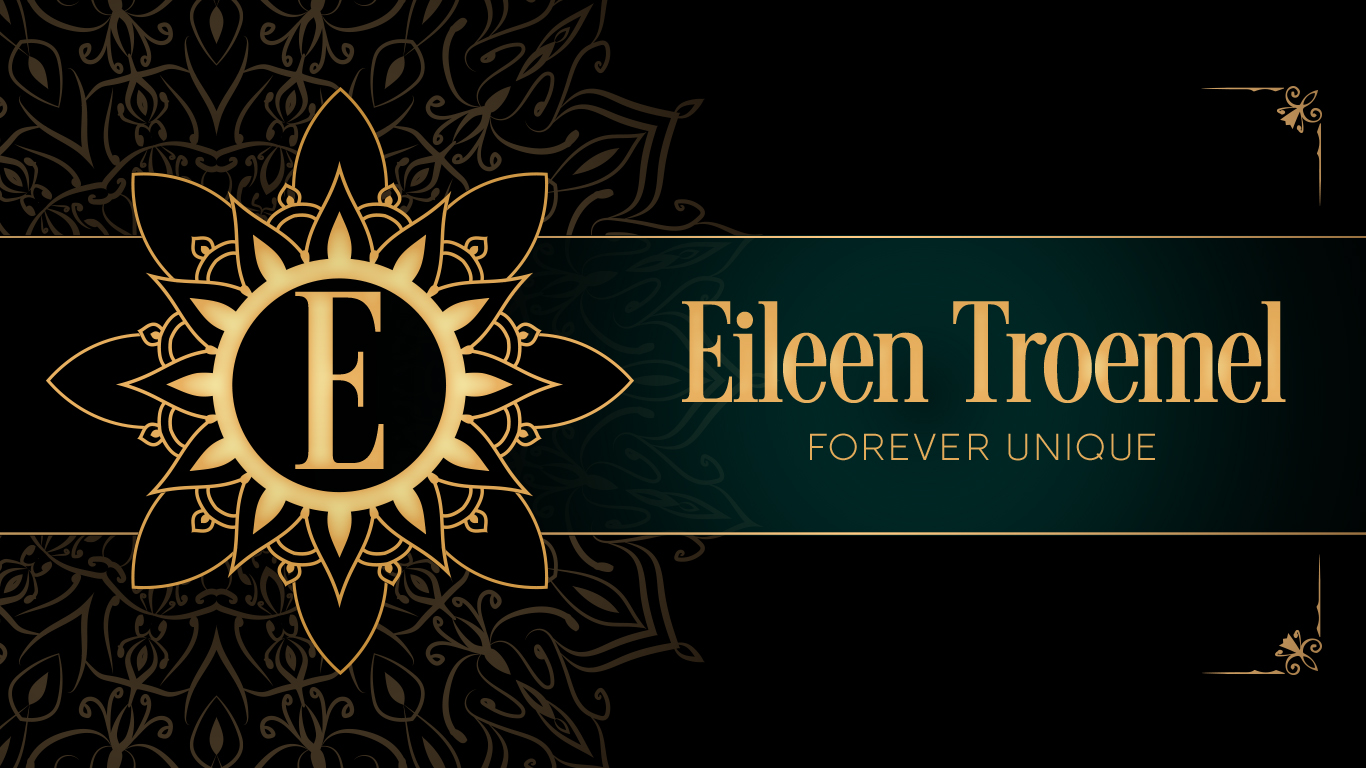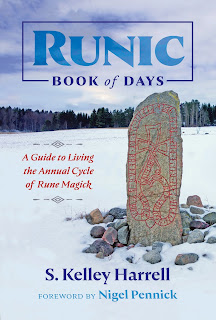Kelley Harrell and I met through a group of like minded people. She’s offered advice and support to me as a writer. Her writing skills are wonderful.
Here is a snippet from the review I did on her Teen Spirit book:
Posted on Facing North
Harrell’s targeted audience are young adults or those starting out on the path of shamanism. The language and style of writing is appropriate for the age group without being condescending. Her style informs without droning on. She gives enough information to give the reader a basic knowledge without overwhelming them if this is their first foray into the topic. According to her bio, Kelly Harrell is a modern shaman and lifelong intuitive. She has a master’s in religious studies and is an ordained interfaith minister. With a nature based system, she works with runes and follows Seior, animism, and Druidry. She states her purpose in writing this book is to guide the young intuitive into a mature facilitator of healing for others.
In her preface, Harrell discusses how a young person has wisdom even though they are young. She starts with how most people become aware there is more to their existence beyond themselves and follows through with how young people can have wisdom or can tap into the world knowledge. She discusses the conflict adults have with idolizing childhood and the connection children have with the source of energy but still consider the children / young people to not being wise. By the end of the preface, Harrell attempts to make a connection and mirrors her format in the later essays by talking about her own experiences.
Author Bio:
One was that she bore an incurable lust for the written word before she’d even learned an alphabet. Having originated under such circumstances she only assumed a path in writing could sate.
Things being what they were, she managed a thorough education in penning her soul’s art, the destination of which she’d planned to be at the feet of National Geographic Magazine (back when there was no NatGeo and there was only one magazine that focused on mummies, Pompeii, bog people, and vanished civilizations). It didn’t work out that way, though. When the time came to pack her bags the impetus was to stay put, a wordless mystery that took Kelley quite a while to unravel.
Some time later she came back to her other childhood truth, which was that she could interact vividly in the unseen world. Kelley felt a little silly then. She’d finally realized all those elegant letters of her naïve youth were really spelling, “Don’t write about the past. Listen to it tell its story.”
From that point on Kelley’s writing took on a rather different life. She began weaving tales of souls consciously steering through the wreckage of colonialism, unquiet dead, and Ancestors becoming–a passionate, sacred pursuit.
Now for the questions:
1. Tell us about yourself.
I’m an author, deathwalker, and intuitive. I live in North Carolina, and have a practice, Soul Intent Arts, in which I teach others to be spiritual stewards of themselves and Nature. My writing and work are focused on radical self-care to ensure community service, with an emphasis social justice through sacred activism.
2. When did you know you wanted to be an author?
I knew I wanted to be an author from about four years old. I wrote things by dictating them to my other. It was my dream to become an author.
3. What genres do you like to read? Are these the same genres you write in?
I prefer urban fantasy. I love the idea of magick folded into everyday life. I tend to read more nonfiction than fiction, however. I have written mostly nonfiction oriented toward animistic and shamanic life, though my first novel is in submission, now. It is New Adult Urban Fantasy.
4. Is your book for adults, young adults or children?
My books are primarily for adults and young adults. I haven’t written books for children.
5. What is your current release or project?
My current book is Runic Book of Days, which is a devotional-style approach to direct relationship with the runes by working with them in season.
6. Tell us about the key characters
It’s non-fiction, so they main characters are me, a ton of research, and scenery from thousands of years ago.
7. What is your blurb or synopsis of the book?
The Old Norse runes, known as the Elder Futhark, have long joined forces with the cycles of the seasons to offer powerful initiations, guidance, and wisdom. Aligning the sacred festivals, plantings, and harvests of ancient runic calendars with our modern 12-month calendar, Kelley Harrell reveals how the runes can once again offer initiations as well as instruct us on the holy days and creative rhythms of today.
Drawing on her more than 25 years of shamanic practice and runic study, Harrell offers a step-by-step primer to work with the runes throughout the year. She explores the meaning of each Elder Futhark rune in detail and presents structured runic devotionals for each half-month, interwoven with guidance on how to make the best use of the life force available during each season. Included are runic initiation rituals for the 8 pagan Sabbats, or holy days, such as the Samhain and Beltane (May Day). Harrell also explains how the runes leading up to each Sabbat help create the space for properly greeting each calendrical transition and completing its initiation.
By moving through Nature’s cycle with the runes, each year becomes a reliable and trackable process of personalized growth and spiritual connection. Progressing through the teachings of each rune while honoring the seasons, Harrell’s year with the Elder Futhark becomes an initiation into a direct relationship with powers of Nature.
8. Share an excerpt (up to 800 words).
Excerpt. © Reprinted by permission. All rights reserved.
Chapter 7
July 14-July 29
Uruz: Taming the Mysterious Self
In the previous half-month Fehu taught us much of personal prosperity and the commitment required to sustain it. As we move into Uruz, that commitment deepens. Uruz represents Auðhumla, the feminine divine in the guise of the auroch–the wild ox. This stave–and in turn this half month–focuses on the body, well-being, and wild potential.
It’s curious that, in the runic ordering, we are given the opportunity to learn how to tend our wealth before we encounter actual creation. We’re given instruction on how to sustain, through Fehu, before we’re fully manifest. If that isn’t a significant hat tip to the importance of duty in earthly life, I don’t know what is. As Uruz is associated with Auðhumla, it’s a significant force of creation. Because there’s no indication of how she originated, she’s seen as having created herself. She’s seen as eternal, thus sustaining in her support of us. With Uruz, we are such infinite mysteries as well.
Our short time with her brings an important observation of vitality. In this season we have the opportunity to make use of our faculties to our highest capability and have the support of an omnipotent force while we do so. This is a natural time to expect and find physical support. It’s a time that the body’s ability to self-heal is exalted, and any changes we implement toward that goal will be fortified by the elements.
With the associations of Auðhumla creating herself into form, Uruz is very much steeped in all things body and sexuality. By form being our most evident state of self, we take for granted that we know our bodies. Even from a spiritual standpoint, we sometimes passively deny our physicality in favor of our souls. If we sit with that, take on honoring the self, we discover that the part of ourselves we least often know isn’t the soul, but our body and its most powerful consciousness counterpart–our ego. When we sit in ignorance of the ego, we sit in ignorance of Shadow, which is our greatest mystery.
Where Fehu represents domesticated cattle, Uruz is the wild, untamable auroch, and as such, brings us close to parts of ourselves that we’ve been taught to subdue, if not subvert. More dominant and demanding than feelings, unconscious motivators are usually internalized before we’re even verbal. They express as Freudian slips, acting without clear motivation, acting without realizing the action, irrational fear, and so on. Uruz brings our attention to these seemingly minor behaviors as places to generate radical change. When we become consciously aware of them, thus take back control of them, we integrate them into informed choice. We stand with more information and can focus the energy and change we want to make in our lives and the world. We do that by engaging Shadow.
Shadow is our greatest intrigue, not because it is unknowable, but because we most often desire not to know it. We evade working with it because it seems frightening, or it may reveal aspects of ourselves too dark for us to handle. In reality, Shadow is merely what isn’t lit. It’s what we don’t know about ourselves. Once revealed, it’s no longer Shadow.
Uruz harnesses the ability to sit in the space between knowing impeccably who we are, and having no idea. It fosters our ability to dwell in our thoughtspace and create ourselves as we want to be, which is born of learning who we’ve been. This stave is wild potential, magick at its rawest.
Bear in mind Uruz is the creative force, not what is created.
9. Do you have a favorite scene?
My book doesn’t have scenes, but my favorite chapter is the sabbat initiation for Samhain. It’s my favorite time of year, and I adore the darkness. The initiation for that sabbat focuses on embracing need.
10. What advice would you give a beginner?
To a beginning writer, I say do your due diligence. The automation of everything today gives the indication that you can cut corners to get published. If you want to be taken seriously as an author and have a long-lasting career, do your homework, invest as much time and energy into the publication process–however you do it, trad or indie–as you do the writing process (maybe even more), and stay true to your writing vision and voice.
To a beginning rune reader, I say focus on coming into relationship with each rune alongside learning what each rune means. It takes a combination of focusing on how they work for your in a modern context, as well as understanding the ancient culture that produced them. I teach a class on coming into relationship with the runes, Reawakening with the Runes.
Please provide the following:
● SIA on Facebook
● On Instagram @kelleysoularts
● On Google+
● On Twitter @kelleysoularts
● Official Author Site S. Kelley Harrell
● Blog Intentional Insights
● Newsletter Spirited Paths

